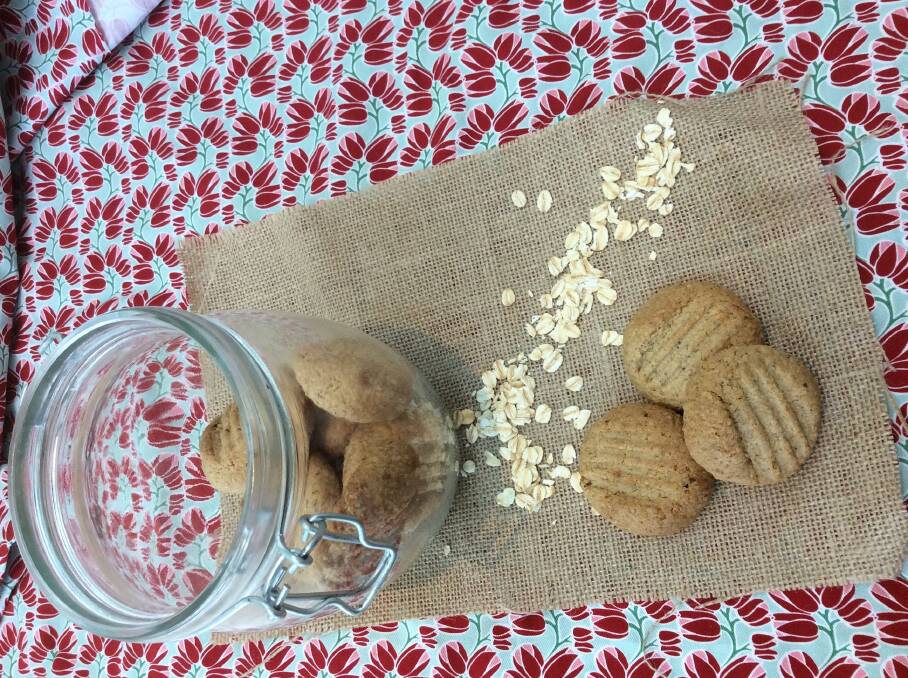
Both Australia and New Zealand lay claim to creating the "Anzac biscuit" and its history remains highly contested with neither country willing to give up the claim for this classic.
Subscribe now for unlimited access.
$0/
(min cost $0)
or signup to continue reading
Interestingly, the original biscuit recipe was not sweet at all, rather it was a savoury biscuit that was used as a substitute for bread for our soldiers during World War I.
According to Unibic Baking Company, who lays claim to producing "Australia's authentic Anzac biscuit recipe", the first-ever published Anzac biscuit recipe was recorded in 1920 and was said to be developed by the women at home, based on ingredients that were readily available at the time of the war, namely oats, sugar, flour, coconut, butter, golden syrup or treacle, and bicarbonate of soda.
None of these spoiled easily, which meant that the biscuits would stay fresh for longer. Eggs were scarce during the war, and made baked goods more likely to spoil, which is why melted butter and treacle were used as binding agents, and bicarb soda as a leavening agent.
Although we tend to enjoy our Anzac biscuits a little sweeter and chewier than the original "rock bread" version, the ingredients we use to make our Anzac biscuits have remained fairly well unchanged to this day. We still use white flour, oats, sugar, golden syrup and butter. Until now, that is.
For those with gluten sensitivity or those who have difficulties with tolerating dairy or refined sugars, these cookies have been a "no-go" zone.
However, I have found an alternative option, so you can still enjoy a traditional-tasting Anzac biscuit at this time of year without the gut-wrenching side effects of gluten, dairy and refined sugars.
Simply by tweaking the original recipe to remove the butter, sugar, white flour and golden syrup, replacing them with more wholesome, less processed ingredients such as almonds, anti-inflammatory macadamia or coconut oil and honey, you can make a much more nourishing treat, which surprisingly still tastes much like the real thing.
If you are gluten intolerant, and can't find yourself some organic oats that are certified gluten-free, you could substitute the oats with quinoa. So there is no need for you to miss out at all.
This recipe has been sourced from Teresa Cutter, otherwise known as "The Healthy Chef". She is one of Australia's leading authorities on healthy cooking who creates delicious foods for optimum health and wellbeing, using organic and natural wholefoods. I love her recipes, including this one, which can be found on her website.
Ingredients:
- 1 cups (175g) organic rolled oats
- cup (40g) organic desiccated or flaked coconut
- cup (60g) flaked or chopped almonds
- 2 tablespoons macadamia nut oil, or cold pressed coconut oil
- 2 tablespoons honey or your alternative such as organic maple syrup or rice syrup
- 1 teaspoon vanilla extract or teaspoon vanilla bean paste
- 1 tablespoon water
Method:
- Combine oats,coconut and almonds into a food processor.
- Add the oil, honey and vanilla.
- Turn on the food processor and mix well for about 15-30 seconds or until combined.
- Add the water and process again.
- The addition of water will help the cookie mixture stick together.
- Form into 20 small cookies.
- Place onto a baking sheet lined with baking paper.
- Flatten down with enough room around each cookie.
- Bake for 20-30 minutes in a low 150C oven, or until golden brown.
- Cool completely before eating and enjoy.
Store in an airtight container for five days.
Yields 20
Illawarra Mercury

